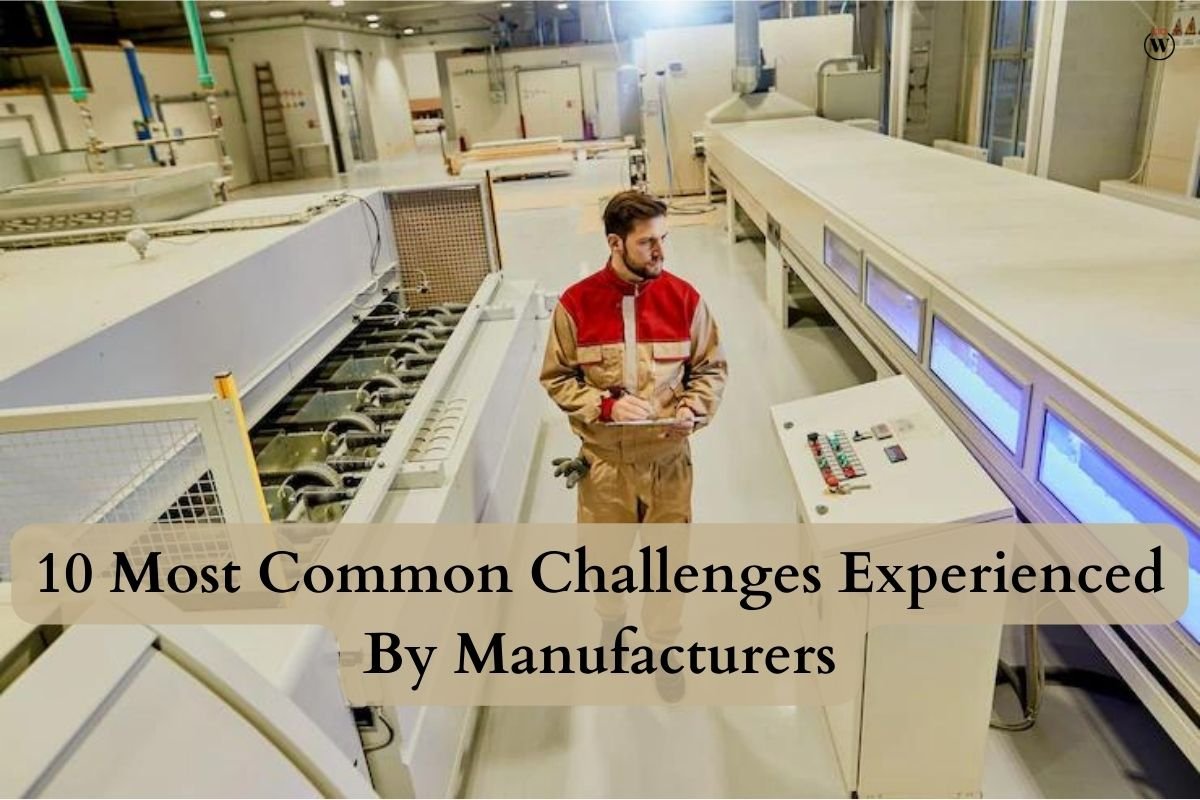The term “smart manufacturing” is being bandied around by everyone in the manufacturing industry. There are a lot of Challenges in Smart Manufacturing and new technology that are coming together in various ways to provide augmented reality/virtual reality solutions, AI (artificial intelligence) solutions, digital twins, digital threads, the Industrial Internet of Things, and a whole lot more. Together, all of this cutting-edge technology and a large number of very bright individuals are bringing about the fourth industrial revolution and turning manufacturing into an economic engine once again.
Here are 11 Challenges in Smart Manufacturing;
11. The absence of well-defined goals, objectives, and justifications
It is essential to ensure that the fundamentals are in order before beginning any project involving intelligent manufacturing to avoid Challenges in Smart Manufacturing. It is critical that personnel responsible for putting the project into action have a thorough understanding of not just what is necessary but also the project’s goals and the advantages it will bring to the organization.

According to John Clemons, MES Solution Consultant at Rockwell Automation, “even if it’s fancy technology and the project is under budget and ahead of schedule, if it doesn’t deliver meaningful business advantages, then the project is a waste of time and money.”
10. A Lack of Comprehension Regarding the Prerequisites
In a manner that is analogous to the goals, objectives, and justifications, it is essential to establish and record the requirements for the project, and then go through these specifications with members of the business team.
According to John Clemons, a MES Solution Consultant for Challenges in Smart Manufacturing at Rockwell Automation, “requirements for any project, and smart manufacturing initiatives are no different, must be driven by the company and must have a clear business case.”
9. Ensuring You Have the Right Equipment
Ensuring you have the right equipment when you’re trying to embrace smart manufacturing. You will be able to automate a good amount of the tasks that need to be done, but you still have to make sure you are focused on being able to improve this. You have to make sure you have the right equipment and machinery that will allow you to run your manufacturing business as effectively as possible, and this is something that plays a part in making this work better for you.
It is important to think about the best ways to achieve success from this and to find the right equipment options for your business. This could include things like finding an air hoist for hire, choosing the conveyor belt choices, and making sure your automation options are going to work effectively.
8. Insufficient Buy-In
Challenges in Smart Manufacturing After the goals, objectives, and reasons have been outlined, the next step is to get employee buy-in from those who are participating and from those who will be utilizing the solution. This is a critical step since it ensures success.
According to John Clemons, a MES Solution Consultant at Rockwell Automation, “You absolutely have to gain their buy-in in order for the project to be successful.”
7. Funding
According to John Clemons, who works as a MES Solution Consultant for Challenges in Smart Manufacturing at Rockwell Automation, “Smart manufacturing initiatives are seldom financed to the degree that they need to be.” This is due to the fact that it appears as if there is always something that gets left out.
It is essential for manufacturers to thoroughly document all of the necessary internal and external resources, checking to ensure that their costs are in line with those of the project.
6. Times and intervals of occurrence
According to John Clemons, a MES Solution Consultant at Rockwell Automation, “the project actually will definitely cost more and take longer than you want or anticipate,” which is a somewhat pessimistic outlook. As a result, it is essential to reach conclusions about the project after gathering relevant information at each stage of the process and making choices based on those conclusions.
“Scope creep is something that often occurs and has to be handled. It most likely occurs more often with initiatives involving smart manufacturing. Clemons says that if you wish to expand the scope of the project, you should make sure that the budget and timeline are also expanded to meet.
5. Changes in Requirements and/or the Operating Environment of the Business

It is common knowledge that the settings in which businesses operate may undergo fast transformations, and the manufacturing sector is one in which this is especially true. It is essential to include flexibility in the project’s goals and criteria in order to render it flexible to shifting environmental conditions. This will ensure that the project is successful.
4. The absence of a leader to steer the project, as well as a lack of commitment
According to John Clemons, who works as a MES Solution Consultant at Rockwell Automation, “This is quite frequent.” “The smart manufacturing project must have a champion,” defined as “someone who pushes the project ahead and is focused on the business processes and the commercial advantages.”
It’s common for people’s dedication to a project to wane over the course of its duration; having a “champion” or tackling the project in stages that highlight individual achievements along the way might help combat this tendency.
3. A Lack of Understanding of the Procedures Involved in Business
Along the same lines as having an understanding of the objectives, prerequisites, and justifications for a smart manufacturing project, it is essential to make certain that all parties involved have an understanding of the business process and how a smart manufacturing solution integrates into the processes.
2. Misunderstanding Technology

Challenges in Smart Manufacturing Following on from the lack of comprehension with regard to business procedures, it is essential that all parties involved have an accurate understanding of the capabilities offered by the technology in order for it to be utilized effectively, realize the benefits that were promised, and be successfully adopted by the organization.
1. Putting the ‘Solution’ First, Ahead of the Requirements
This takes happen much too often. Someone has already solved the problem or worked out how to use the technology before the business needs have ever been discussed. “This is nothing more than a formula for catastrophe, but just because it’s not simple to prevent doesn’t mean it’s not a recipe for disaster,” says John Clemons, MES Solution Consultant at Rockwell Automation. It is essential for manufacturers who are considering the implementation of a smart manufacturing project to be aware of this reality and to pivot the discussion back to the requirements of the company.
BOTTOM LINE
It is essential for manufacturers who are considering the implementation of a smart manufacturing project to be aware Challenges in Smart Manufacturing of this reality and to pivot the discussion back to the requirements of the company.










